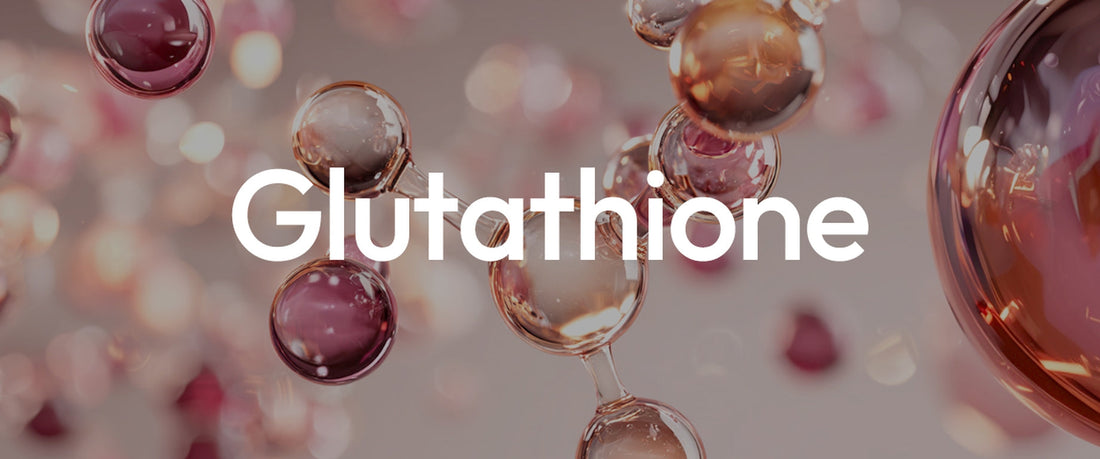
Overview
- The liver plays a central role in energy, metabolism, and whole-body regulation. When overburdened, oxidative stress and metabolic waste can accumulate—often showing up on the skin as dullness, uneven tone, or fatigue. In contrast, efficient liver function supports lighter energy and a clearer, more luminous appearance.
- In modern nutritional science, glutathione (GSH) is considered a foundational molecule for both liver and skin health. It functions as a core cellular antioxidant and detoxification agent.
In simple terms: A healthier liver often means brighter skin—and GSH helps both.
GSH and Liver Detoxification
- GSH is the most abundant natural antioxidant in liver cells (hepatocytes) and is a key molecule in clearance and repair.
- During Phase II metabolism, glutathione S-transferases (GSTs) conjugate GSH to toxins, drugs, or heavy metals, converting them into water-soluble forms for excretion via bile or urine.
- GSH also maintains a reduced intracellular environment necessary for DNA, RNA, and protein synthesis—supporting repair and regeneration.
In simple terms: GSH “binds and clears” unwanted compounds, while also protecting the liver’s repair machinery.
Human Evidence
- In a multicenter clinical study (Honda et al., 2017), individuals with non-alcoholic fatty liver disease (NAFLD) followed a 3-month diet and exercise plan, then supplemented with 300 mg/day oral GSH for four months.
- Results showed significant decreases in ALT, AST, triglycerides, free fatty acids, and ferritin. Some also saw improvements in hepatic fat deposition and fibrosis markers.
In simple terms: In NAFLD, oral GSH helped improve enzyme markers and liver health metrics when added to lifestyle changes.
GSH and Skin Brightness
1. GSH supports skin clarity by regulating melanin production:
- It inhibits tyrosinase activity by competing for copper at its active site.
- It shifts melanin production from darker eumelanin toward lighter pheomelanin.
2. This dual mechanism may promote a brighter, more even skin tone.
In simple terms: GSH turns down melanin output and nudges it toward lighter pigment.
3. Its antioxidant properties also limit reactive oxygen species (ROS), which are known to trigger melanin synthesis.
In simple terms: Less oxidative stress often means fewer triggers for dark spots.
Human Evidence
- In a 4-week double-blind, placebo-controlled trial (Arjinpathana & Asawanonda, 2012), 500 mg/day of oral GSH led to a statistically significant reduction in melanin index, particularly on the face and inner arms.
- 23.3% of participants showed measurable lightening. UV spot counts also declined.
In simple terms: Oral GSH helped a portion of users achieve brighter, clearer-looking skin within 4 weeks.
Why “Reduced” GSH?
- GSH exists in reduced (GSH) and oxidized (GSSG) forms; over 90% in healthy cells is the reduced form.
- Reduced GSH is more active, more stable, and more readily absorbed in the gut and used by the liver.
- It directly scavenges ROS, supports cellular repair, and maintains antioxidant defenses.
- Studies show oral reduced GSH can raise tissue levels, especially in the liver.
In simple terms: Reduced GSH is the usable, active form—your liver uses it first.
Age, Lifestyle, and Decline in GSH
- With age and modern stressors (late nights, pollution, alcohol), GSH levels decline.
- Lower GSH means reduced detoxification and antioxidant buffering—affecting liver resilience and skin clarity.
- Supplementation may help restore internal GSH pools and support whole-body balance.
In simple terms: We lose GSH over time—topping it up may help both liver and skin.
FAQ
Q1: What is glutathione (GSH)?
A: GSH is a tripeptide (γ-glutamyl-cysteinyl-glycine), the body’s master antioxidant and key to cellular detox.
Q2: What’s the difference between reduced GSH and oxidized GSSG?
A: Reduced GSH is the active, dominant form in cells. It directly neutralizes ROS and supports detoxification.
Q3: Can oral GSH raise body levels?
A: Yes. Studies cited here show oral GSH can raise plasma and liver GSH concentrations.
Q4: Which form is best to supplement?
A: This article focuses on reduced GSH, the preferred form for liver function and systemic antioxidant support.
References
1. Ketterer, B., Coles, B., & Meyer, D. J. (1983). The role of glutathione in detoxication. Environmental Health Perspectives, 49, 59–69. https://doi.org/10.1289/ehp.834959
2. Villarama, C. D., & Maibach, H. I. (2010). Glutathione as a depigmenting agent: An overview. International Journal of Cosmetic Science, 27(3), 147–153. https://doi.org/10.1111/j.1468-2494.2004.00224.x
3. Honda, Y., Kessoku, T., Ogawa, Y., et al. (2017). Efficacy of glutathione for the treatment of nonalcoholic fatty liver disease: An open-label, single-arm, multicenter, pilot study. BMC Gastroenterology, 17, 96. https://doi.org/10.1186/s12876-017-0650-y
4. Arjinpathana, N., & Asawanonda, P. (2012). Glutathione as an oral whitening agent: A randomized, double-blind, placebo-controlled study. Journal of Dermatological Treatment, 23(2), 97–102. https://doi.org/10.3109/09546634.2010.543956
These statements have not been evaluated by the Food and Drug Administration. This product is not intended to diagnose, treat, cure, or prevent any disease.
Results may vary by individual.
This information is for educational purposes and is not a substitute for medical advice. Please consult your healthcare provider before use if pregnant, breastfeeding, or managing a medical condition.